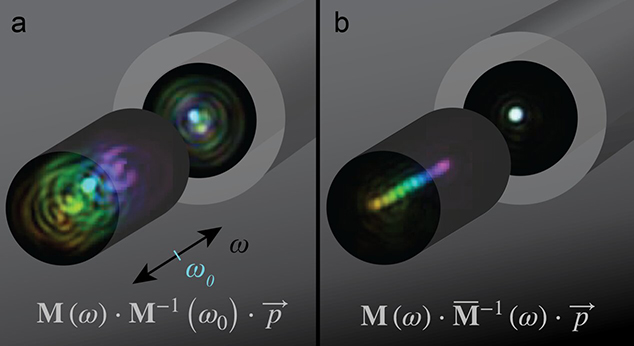Researchers at the Wellman Center for Photomedicine have demonstrated that wavelength-dependent changes in the spatial distribution of light transmitted through multimode fiber are not random but highly predictable.
They developed a dispersion model and calculation method for efficiently measuring the transmission of light through optical fibers across the entire wavelength range. Controlling the spatial transmission of light of different wavelengths via multimode fibers has great potential for applications in the fields of bioimaging and telecommunications.

Multimode fibers (MMF) consist of an optical core embedded in a cladding and are typically only 125 µm in diameter, about the thickness of a human hair. Unlike single-mode fibers, whose cores are so small that they can only guide a single spatial mode, MMFs have hundreds or thousands of spatial modes that propagate at different speeds and often couple with each other.
Therefore, MMF can efficiently transmit light, but does not maintain its spatial pattern. The input signal is coupled to a combination of mixed modes and undergoes different phase delays, resulting in a seemingly random output. However, the input and output electromagnetic fields are related in a linear fashion, and the coupling coefficients between all involved input and output modes define the coherent transfer matrix of the fiber. From this perspective, MMF can be regarded as an unusual optical component.
Once the transfer matrix is known (usually via calibration), its effects can be calculated or compensated by the spatial light modulator. Advances in the control of light transport through such complex media offer great potential for future applications, including imaging via MMFs for microendoscopes in biomedicine, and spatial multiplexing in telecommunications.
One of the main challenges in controlling optical transmission through MMFs is the wavelength dependence of the fiber transmission matrix. In general, small changes in wavelength induce seemingly independent distributions of the transmitted field. Controlled transmission of multiple wavelengths requires tedious calibration of the transmission matrix for each wavelength.
